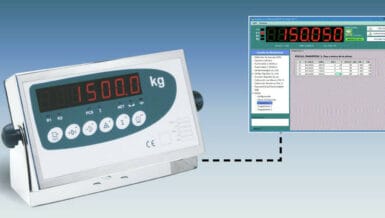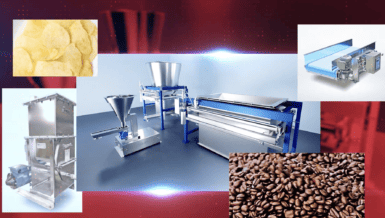Advantages
- Measures the real quantity of a substance, indicated in mass, i.e. kilograms (kg), tons (t).
- Provides the highest accuracy compared with other level methods.
- Non-invasive, without being in contact with the product.
- Non influenced by the vessel geometry nor material density changes and product cavities, non-uniform product surface created by loading and downloading, dust, steam atmospheres or foams inside the Silo.
- Allows Industrial Process Control and Automation.
- Keeps traceability, in same units of mass, from the Inventory in the Silos, during the manufacturing Process in the Tanks and in the final Packaging machines at the End of the Line.
Capacity of the load cells

The objective is to estimate the real load on each supporting point for all the operating circumstances and life of the weighing system including extreme situations and choose the load cell of a suitable Nominal Capacity with an adequate safety margin.
The Nominal Capacity of a load cell is determined as follows:
- Dead Load: The weight of the empty structure, including all elements: tank, pipes, vales, engines, agitators, heating fluids and accessories.
- Product Weight or Net Weight: The maximum quantity of product that can be entered into the tank.
- Gross Weight: It is the sum of the Dead Load and the Product Weight or Net Weight.
- Number of Supports N: The number of supports on which the weighing tank or silo is supported.
- The theoretical static load per support is the result of dividing the Gross Weight by the Number of Supports.
- Select the rated Nominal Capacity of the load cell higher than the theoretical static load per support multiplied by a safety factor k, according to:
Cell Nominal Capacity ≥ k x Gross Weight / N
Where k is a safety factor value between 1,3 and 2,5, to increase the necessary capacity of the cells in respect of the theoretical static value. Its selection will depend on the presence of static or dynamic loads, vibrations, non-uniform distribution of loads, impacts or rolling loads.
A practical choice for an apparently static loads is to use the k and round up to a rated Nominal Capacity of a commercial cell.
- Three supports tank (N=3) k = 1,3
- Four supports tank (N=4) k= 1,5
- Over four 4 supports tank (N= 6, 8, …) k= 1,7
After the installation, it is important to check the load distribution for each bearing point by visual inspection and measuring the individual mV output of each load cell.
Continuing by checking the following questions and correct the Nominal Capacity of the cell if necessary:
- May the load be distributed in a non-uniform manner?
- Are there agitations or impacts?
- Is it possible that the tank has a higher capacity and it may overflow exceedingly thus the maximum Product Weight?
- Does the possibility of earthquakes or strong wind in the area exist?
- Can you ensure a good levelling after installation for obtaining a good load distribution for each bearing point?
Environmental considerations
It is very common that there exist various models of load cells with the same Nominal Capacity, and so, the most suitable for the environmental working conditions should be chosen:
- For corrosive environments or in presence of permanent humidity, it is recommended the use of stainless steel and hermetically welded sealed load cells.
- For potentially explosive environments, there exist also specific load cells including ATEX certification.
- Verify the need of any additional safety elements for example in areas with special requirements against earthquakes, strong winds or if there is risk of any injury to persons or damage of goods.

Conclusions
The current relatively low cost of the weighing components, as load cells and electronics, compared with the high number of potential advantages makes easy to obtain a fast return of investment of the weighing system for a Silo.










































